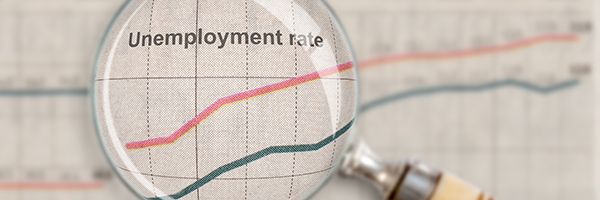According to the Department of Labor another 2.4 million Americans filed initial claims for unemployment in the week that ended May 16. That puts the total from this report at 38.6 million initial claims for unemployment filed in the last 9 weeks. The two-month total is now equal to all the initial claims filed during the Great Recession. Economists had projected 2.4 million initial claims for the week.
The total number of continuing claims–the total number of Americans receiving unemployment benefits–rose to a record 25.1 million for the week ended May 9. That sent the insured unemployment rate–the number of people currently receiving unemployment insurance as a percentage of the total eligible labor market–to 17.2%.
Maybe.
Like last week there are errors in this data. In the week prior report Connecticut state officials over-reported the number of claims filed. This week it’s Massachusetts, which reported 1.184.792 claims under the separate federal Pandemic Unemployment Assistance program instead of the 115,952 initial claims actually filed last week under the separate program.
The reporting mistakes, as I understand them, don’t change the totals on the initial and continuing claims reports as the errors are in reporting for a separate program. But the possibilities of errors as well as the lag in the reporting make it hard to confidently say what’s going on in the real economy.
Right now it looks like we’re seeing a drop in continuing claims in a majority of states as re-opening brings people back to work. The weekly rise in continuing claims is the result of increases in California and Florida. Most states showed a drop in initial claims last week, but California, New York, and Washington showed significant increases. California continues to be a “data problem” in this figures because of the states biweekly filing cycle of unemployment claims and payments.
According to recent surveys by the Labor Department and the Federal Reserve, a large majority of laid-off workers expect that to return to their previous job. Economists, however, are increasingly questioning that view. For example, Nicholas Bloom, an economists at Stanford University, told the New York Times, “I hate to say it, but this is going to take longer and look grimmer than we thought.” Bloom is the co-author of a story on the effects of the coronavirus on the labor market. That study estimates that 42% of recent layoffs will result in permanent job loss. And many of the new jobs created in during the coronavirus shelter-in-place economy and in the early stages of a post-virus recovery are likely to be at low wages for delivery drivers, warehouse workers and cleaners.
I think that it’s way too early to project what the labor market and economy will look like after the coronavirus. A lot depends on whether companies decide to implement more automation as a way to reduce the upheaval from future waves of the virus–or from outbreaks of other viruses. Another unknown at this point is if a continuation of the trend toward working at home will thin out corporate workplaces with a resulting reduction in traffic to work-place-related restaurants and businesses.


